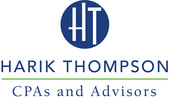|
You may have passed on interruption insurance because policy costs range from $750 to $10,000 or more, depending on business size. But consider this: Today there are a greater number of earthquakes, storms, floods and heatwaves damaging businesses in major ways. Since 1970, the number of disasters has more than quadrupled worldwide. What it is and how it works:
Most standard business insurance policies cover only loss or damage to such tangible items as your equipment and inventory, your warehouse, your office or store, but not lost profits if your business cannot operate. With business interruption coverage added to your business policy, you'll document your current net income.
What types of interruptions do you want to cover? Interruption coverage mirrors what you covered in your main business policy:
Standard interruption policies exclude this. You'll need to add a rider to your policy for this. So then, how do you calculate coverage?
You should know that interruption insurance doesn't take care of every possible disaster cost.
To cover these, you'll need an extra expense rider—a type of provision that can reimburse for the cost of moving inventory, for instance. Your business is at risk when related businesses are affected by disaster:
These types of events hurt financial results even though your own facilities aren't damaged. Contingent business insurance covers your lost profits in these disaster scenarios. How do you get reimbursed? Insurers generally exclude the first few days after a disaster from their calculations, so put aside what you'd need in cash to cover those costs. Furnish your insurer with extensive documentation of your lost profits. This would mean that if you save records electronically off-premises or store printed copies offsite, you'll still be able to prove losses even though your main facilities have been destroyed. We've seen some terrible weather-related disasters in recent years—incidents that have causeed tremendous damage. Given that the number of costly disasters is rising, it's best to be prepared and less at risk. Comments are closed.
|
Newsletter articles are posted every 2 weeks. If you would like to have our e-newsletter delivered directly to your inbox, please sign up. Your information is confidential; you can unsubscribe at any time. Subscribe. Categories
All
|
Proudly powered by Weebly

 RSS Feed
RSS Feed